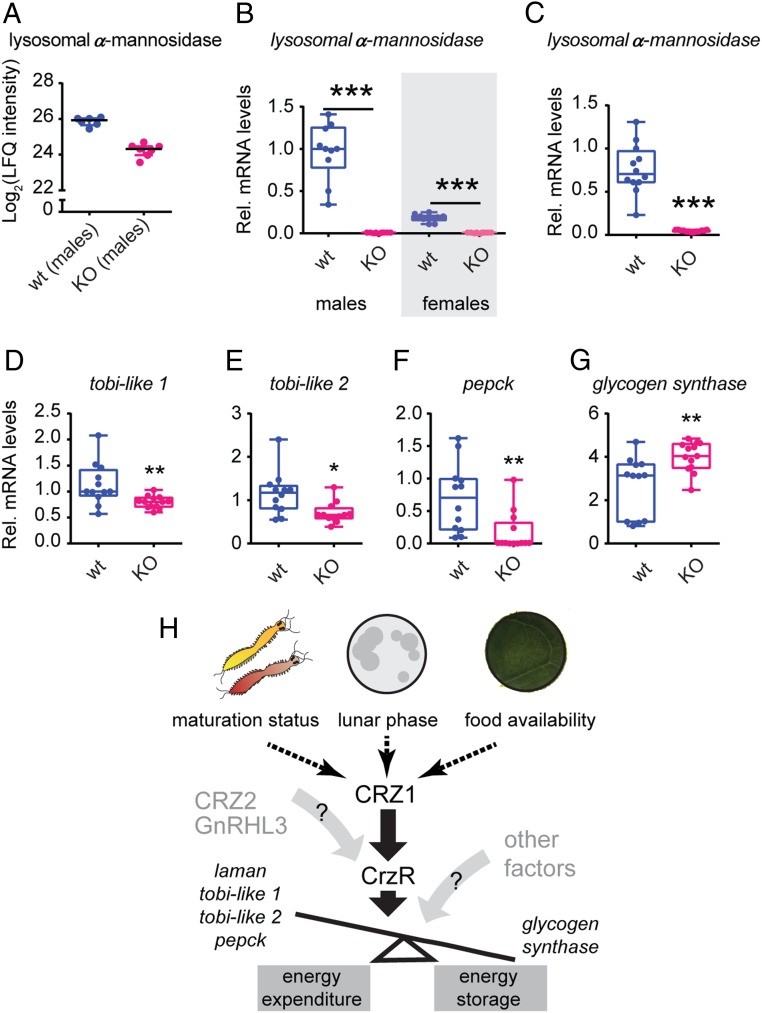Fig. 4.
CRZ1/GnRHL1 contributes to glycoprotein turnover and carbohydrate homeostasis. (A) Down-regulation of lysosomal α-mannosidase in heads of crz1−/− (KO) specimens (Right) compared to wild-type controls (Left). Plot extracted from proteomic comparison, represented as LFQ intensity. Lysosomal α-mannosidase is 1.6-fold enriched in the male +/+ proteome compared to the −/− counterpart. n = 6 to 7. (B and C) Relative mRNA levels in metabolically active tissues (trunk) of the lysosomal α-mannosidase identified by mass spectrometry analysis. This gene was strongly down-regulated in both crz1−/− (KO) mature males and females (B), as well as in crz1−/− (KO) premature worms (C) compared to wild-type counterparts. (D–G) crz1 knockout (KO) affects the expression of enzymes involved in glucose homeostasis at the transcript level. Relative expression levels of tobi-like 1 (D) and tobi-like 2 (E) α-glucosidases are significantly down-regulated in crz1 mutants (KO), as well as the identified pepck (F). Inversely, mRNA levels of glycogen synthase were significantly up-regulated in crz1 mutants (KO) (G). For all qRT-PCR experiments, 4 to 5 trunks were used for single biological replicate. Relative expression was calculated using sams as reference gene, and data were normalized to the expression of crz1+/+ (wt) controls. n = 10 to 13 biological replicates. Statistical significance was tested using Mann–Whitney U test. *P < 0.05; **P < 0.01; ***P < 0.001. (H) Graphical summary of the presented data and the proposed contribution of Platynereis CRZ1/GnRHL1 signaling to the regulation of the energy balance according to developmental and environmental cues and the coordination of processes such as developmental progression and growth.

